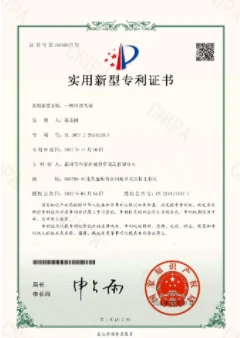cold strip mill
Understanding Cold Strip Mills A Cornerstone of Metal Processing
Cold strip mills play a pivotal role in the steel and metal processing industry, providing essential capabilities for producing high-quality thin strips of metal, primarily steel. These mills operate through a series of processes that transform large, hot-rolled slabs or coils into thinner, more manageable and refined strips that can be utilized in various applications.
The significance of cold strip mills lies in their ability to produce metal strips with precise thickness and surface finish. While hot rolling processes are conducted at elevated temperatures, cold rolling involves the deformation of metal at or near room temperature. This practice not only enhances the strength of the material due to strain hardening but also improves the dimensional accuracy and surface finish. As a result, cold-rolled products exhibit superior mechanical properties and are often preferred in sectors such as automotive, construction, and manufacturing.
The Cold Rolling Process
The cold rolling process begins with the preparation of hot-rolled coils, which are first cleaned and often pickled to remove any oxide layer before being entered into the cold strip mill. Once in the mill, the coils undergo several passes through a series of rollers, which compress and elongate the material to achieve the desired thickness. The rollers are designed to operate under high pressures, allowing them to impart a significant amount of force on the metal, ensuring a uniform thickness across the strip.
As the material is processed, it passes through various stages such as reduction, flatness correction, and trimming. Reduction refers to the initial rolling process where the thickness is significantly decreased. Flatness correction ensures that the metal strip has a uniform flat profile, while trimming involves cutting the edges to remove any irregularities developed during previous stages. Advanced control systems are employed during these processes to monitor and adjust parameters dynamically, ensuring that the final product meets stringent specifications.
cold strip mill

Applications of Cold Strip Products
The end products from cold strip mills include a variety of steel grades, which can be further processed into different forms such as sheets, foils, or electrical steels. These products find applications in numerous industries. In the automotive sector, cold-rolled strips are extensively used for making body panels, components, and various structural parts due to their enhanced strength and reduced weight.
In the appliance industry, manufacturers utilize cold-rolled steel for producing high-quality surfaces and durable components, particularly for refrigerators, washers, and kitchen appliances. Additionally, the construction industry benefits from cold strip products for roofing, siding, and structural supports, emphasizing how integral these materials are to modern infrastructure.
Technological Advancements and Future Trends
Advancements in technology continue to shape the evolution of cold strip mills. Automated systems for quality control, real-time monitoring, and predictive maintenance are becoming increasingly commonplace, significantly enhancing the efficiency and reliability of production. Innovations such as advanced metallurgy, process modeling, and the use of artificial intelligence in production control are paving the way for more sustainable practices and improve the overall footprint of metal processing.
In conclusion, cold strip mills are a cornerstone of modern metal processing. Their ability to transform raw materials into high-quality and precision-engineered strips is essential for various industries that rely on steel and metal products. As technology advances, the cold strip mill's capabilities are only set to improve, ensuring its ongoing relevance in an evolving industrial landscape. The future of cold strip mills holds promise for greater efficiency, sustainability, and a wider range of applications, solidifying their importance in the global economy.
-
High Frequency Straight Seam Welded Pipe Production Line-BzZhou Xinghua Machinery Equipment Manufacturing Co., LTD.|line pipe steel&welded gas pipeNewsJul.30,2025
-
High Frequency Straight Seam Welded Pipe Production Line-BzZhou Xinghua Machinery Equipment Manufacturing Co., LTD.|High Precision&Automated SolutionsNewsJul.30,2025
-
High Frequency Straight Seam Welded Pipe Production Line - BzZhou Xinghua Machinery Equipment Manufacturing Co., Ltd.NewsJul.30,2025
-
High Frequency Straight Seam Welded Pipe Production Line-BzZhou Xinghua Machinery Equipment Manufacturing Co., LTD.|Precision Welding, High EfficiencyNewsJul.30,2025
-
High Frequency Straight Seam Welded Pipe Production Line|BzZhou Xinghua|Precision Welding&EfficiencyNewsJul.30,2025
-
High Frequency Straight Seam Welded Pipe Production Line - BzZhou Xinghua|Precision Engineering&EfficiencyNewsJul.30,2025


